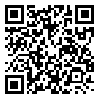Fri, Apr 4, 2025
[Archive]
Volume 36, Issue 1 (1-2022)
Med J Islam Repub Iran 2022 |
Back to browse issues page
Download citation:
BibTeX | RIS | EndNote | Medlars | ProCite | Reference Manager | RefWorks
Send citation to:



BibTeX | RIS | EndNote | Medlars | ProCite | Reference Manager | RefWorks
Send citation to:
Arzani P, Khalkhali Zavieh M, Khademi Kalantar K, Azadi F, Naim P. Tele-Physiotherapy in Iran: Perceived Challenges by Physiotherapists to Its Implementation in COVID19 Outbreak. Med J Islam Repub Iran 2022; 36 (1) :132-139
URL: http://mjiri.iums.ac.ir/article-1-7697-en.html
URL: http://mjiri.iums.ac.ir/article-1-7697-en.html
Student Research Committee, Department of Physiotherapy, School of Rehabilitation, Shahid Beheshti University of Medical Sciences, Tehran, Iran , Pa.arzani@sbmu.ac.ir
Abstract: (1731 Views)
Background: COVID-19 pandemic has brought new and fundamental challenges to the healthcare system. Physiotherapists, like other rehabilitation professionals, have been involved in this crisis. One way to protect both the clients and physiotherapists from getting infected and provide physiotherapy services effectively is tele-physiotherapy (TPT). This study investigated the physiotherapists’ perception of TPT and the barriers to its practical application during the COVID-19 outbreak.
Methods: This cross-sectional, descriptive study was adopted in December 2020, using a newly designed checklist. The checklist had four sections, consisting of physiotherapists’ knowledge and awareness, satisfaction, attitude, and also barriers to the use of TPT during the COVID-19 outbreak. The checklist was uploaded to social physiotherapy networks across Iran, and the descriptive data were analyzed statistically.
Results: In this study, 192 physiotherapists participated as follows. Before the COVID-19 outbreak, 48.96% of the participants used TPT, while this rate grew to 64.06% during the outbreak. The majority of the participants (65.1%) believed that the use of TPT would improve the relationship among the physiotherapists and their patients. They also had the lowest level of knowledge (27.08%) about one item in the checklist, i.e., “how to consult with TPT”. Based on the participants' views, lack of proper familiarity with the use of this method (87.5%), a lack of high-speed internet access (86.45 %), and a lack of awareness of this method and its benefits (84.37%) had the highest frequencies compared to other barriers.
Conclusion: The results indicate that during the COVID-19 pandemic in Iran, a significant increase in the use of TPT has developed. The overall physiotherapists’ attitude towards TPT was positive, but it was necessary to minimize or eliminate the barriers to applying this effective method. Major recommendations from the participants were: continue to seek physiotherapists’ and patients’ perspectives, introduce proper educational programs for new students enrolled in professional associations and universities, and support the infrastructures, such as telecommunication and financial assistance from insurance companies.
Methods: This cross-sectional, descriptive study was adopted in December 2020, using a newly designed checklist. The checklist had four sections, consisting of physiotherapists’ knowledge and awareness, satisfaction, attitude, and also barriers to the use of TPT during the COVID-19 outbreak. The checklist was uploaded to social physiotherapy networks across Iran, and the descriptive data were analyzed statistically.
Results: In this study, 192 physiotherapists participated as follows. Before the COVID-19 outbreak, 48.96% of the participants used TPT, while this rate grew to 64.06% during the outbreak. The majority of the participants (65.1%) believed that the use of TPT would improve the relationship among the physiotherapists and their patients. They also had the lowest level of knowledge (27.08%) about one item in the checklist, i.e., “how to consult with TPT”. Based on the participants' views, lack of proper familiarity with the use of this method (87.5%), a lack of high-speed internet access (86.45 %), and a lack of awareness of this method and its benefits (84.37%) had the highest frequencies compared to other barriers.
Conclusion: The results indicate that during the COVID-19 pandemic in Iran, a significant increase in the use of TPT has developed. The overall physiotherapists’ attitude towards TPT was positive, but it was necessary to minimize or eliminate the barriers to applying this effective method. Major recommendations from the participants were: continue to seek physiotherapists’ and patients’ perspectives, introduce proper educational programs for new students enrolled in professional associations and universities, and support the infrastructures, such as telecommunication and financial assistance from insurance companies.
Type of Study: Original Research |
Subject:
COVID 19
Send email to the article author
| Rights and permissions | |
 |
This work is licensed under a Creative Commons Attribution-NonCommercial 4.0 International License. |








